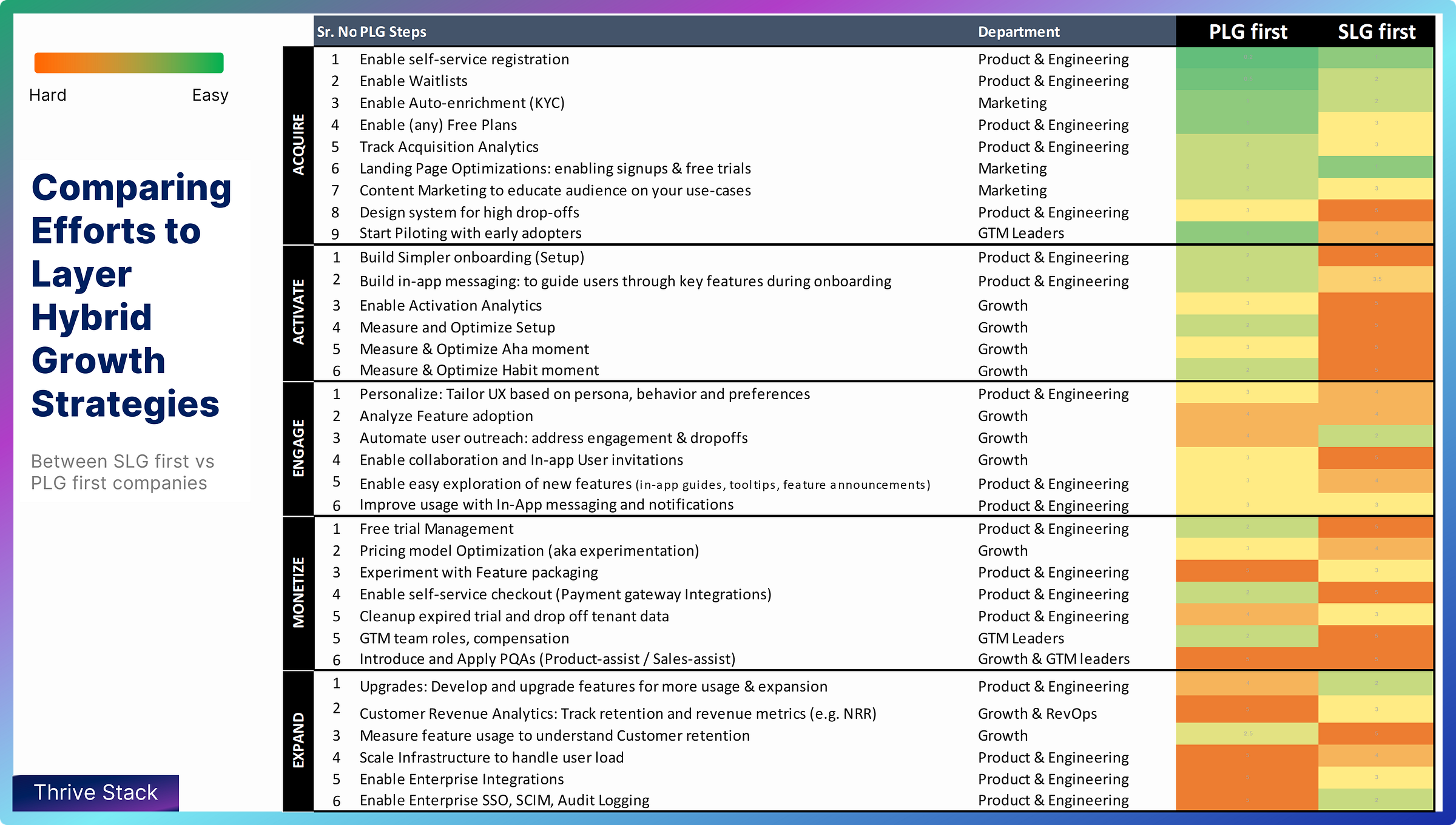Pursuing Hybrid Growth (PLG+SLG): Comparing readiness efforts between PLG-first vs SLG first companies
Layering PLG can cost substantially more after a successful SLG - and most likely to fail. We took a checklist based approach to validate the claim.
In the last couple of months, we have been watching the news flip-flopping on PLG vs SLG. Equals (news here), Airtable (news), Rainforest QA, Notion, DigitalOcean, and many more. With efficient growth trending strongly, the emergence of a hybrid growth strategy (PLG+SLG) seems inevitable.
However, SaaS companies find it difficult to layer these two strategies. In this article, we investigate how SaaS companies are adapting to this trend.
“The market has tipped towards favoring efficient growth over growth at all costs,” Howie Liu, Airtable CEO, tells Forbes. “We must operate the business in a more mature way that puts us on a path to become a public company and to have durability and efficiency in how we grow.
What is SaaS Hybrid Growth Strategy?
A hybrid growth strategy for SaaS combines product-led and sales-led approaches to acquire and retain customers. It involves using a free or low-cost product that users can try and adopt on their own, and a sales team that can assist and upsell larger or more complex accounts. A hybrid growth strategy can help SaaS companies cover a wider range of market segments, optimize customer acquisition costs, and increase customer lifetime value. Some examples of SaaS companies that use a hybrid growth strategy are Slack, Dropbox, Zoom, and Clearbit.
We asked: Is it easier to layer PLG over SLG, or otherwise?
We asked SaaS Founders, CTOs, and GTM leaders across Seed, Series-A, and Series-B companies. The high-level consensus was that layering PLG on top of successful SLG is a lot harder - changes across Org structure, compensation, product, and engineering take a major shift.
No surprise here… Expansion seems a lot easier with SLG-first companies. However, efforts on Free-User Acquisitions, Activations, Engagement, and Monetization were thought to be much more easier for PLG-first companies.
We tested against the Product readiness checklist typically used before GTM’g the product.
Checklist: We used a detailed checklist, by combining OpenView’s 11 PLG Principles with the Engineering+Data Analytics list of ToDos) and tested the high-level answers against it.
Weights: We gave weights, purely indicating the efforts the SaaS builders will need to take to be GTM-ready. e.g. if an SLG first company will need a lot more effort to re-design their system for Acquire.8 - Design for high drop-offs. Engineering items like creating micro-tenants, automating cleanup of dropped-off users, etc.
A PLG-first company will find it relatively easier to design its systems for high drop-offs from the very outset.Departments: We assigned the ownership of the checklist items based on the KPIs that each of the departments might need to own. For reference, here’s the reference article from
on who owns growth in SLG vs PLG companies.
What do you think? Please comment here or DM us on LinkedIn.
References
How we're changing from Sales-Led Growth (SLG) to Product-Led Growth (PLG) - By Are W. Sandvik, ShiftX
PLG + SLG: Maximize your business growth with a hybrid GTM strategy - By @Leah Messenger
Who Owns Growth in SaaS? It Depends. Here’s What the Data Says - By
11 PLG Principles - By Kyle Poyar, Sanjiv Kalevar and Chris Gaertner
May 17, 2022
5 SaaS Growth Strategies to Scale Your Business - By Shubham Gupta, Gartner
Keys to Product-Led Growth for Tech Providers - By David Yockelson, Gartner









